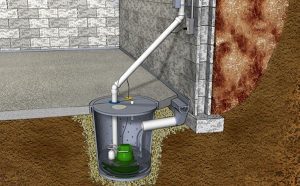Have you ever heard what sump pumps are? Or have you ever wondered why it is used for? Not by any means, then you’re fortunate enough that you don’t require such one. Perhaps you are here because you need such one in future or eager to know why it is used for. Read on.
A Sump pump is nothing but a pump that is equipped on the bottom of the floor that is being used in order to discharge the accumulated water from the floor. It is frequently used at the time of flooding for the purpose of removing the stagnated water from that area. Its work is to pump out the excess water from the basement of the building and keeps the area dry.

Let us look into its functions in a more detailed way:
Sump pump normally runs with the help of electricity in order to suck the liquid (water) from one place and release them in another place where it is no longer problematic.
A sump pump can be categorized into two types:
- This pump is seated above the lowland or wetland where it can be easily adjusted.
- It is less expensive and also has a long life of 25 – 30 years if it is well maintained and kept away from wastes (debris).
- They can be louder as they are exposed in an open place.
- Repair or overhauling works can be easily done.
- In case of a submersible pump, it is wholly fixed inside the lowland or wetland, and are uniquely secured to restrict electrical short circuits.
- It is more expensive in nature and lasts not more than 15 years.
- They are not exposed to dust.
- It spends less energy when compared to pedestal pump.
Run through the following points before you select a sump pump:
- Pick the one which is made of an iron core and try to avoid the plastic ones, which can prolong the lifespan of the pump and can also bear the heat.
- Choose the one with automatic alarm system when the water level reaches a particular point.
- Look for the one which runs smoothly without creating a loud noise.
- A backup system (battery) or generator is necessary for the uninterrupted working of the pump even at the time of power cuts.
- Sump pumps are designed to work automatically and it can also work manually. Choose the one based on your preference.
- Based on the flow of water, the horsepower of the pump should be matched (minimum of 1/3 HP is necessary). If you get trouble with the existing one, probably move on to the next larger horsepower.
- The installation process is done easily within minutes with the help of required tools.
- Look for the size of pump whether it can suit your place and are user-friendly.
- Vibrations can make the pump to fall. Therefore ensure there is a rubber grip on the pump for proper performance.
- Proper maintenance of the pump can improve the lifespan of the pump and also functions smoothly.
Click here to read the reviews of battery backup sump pump



